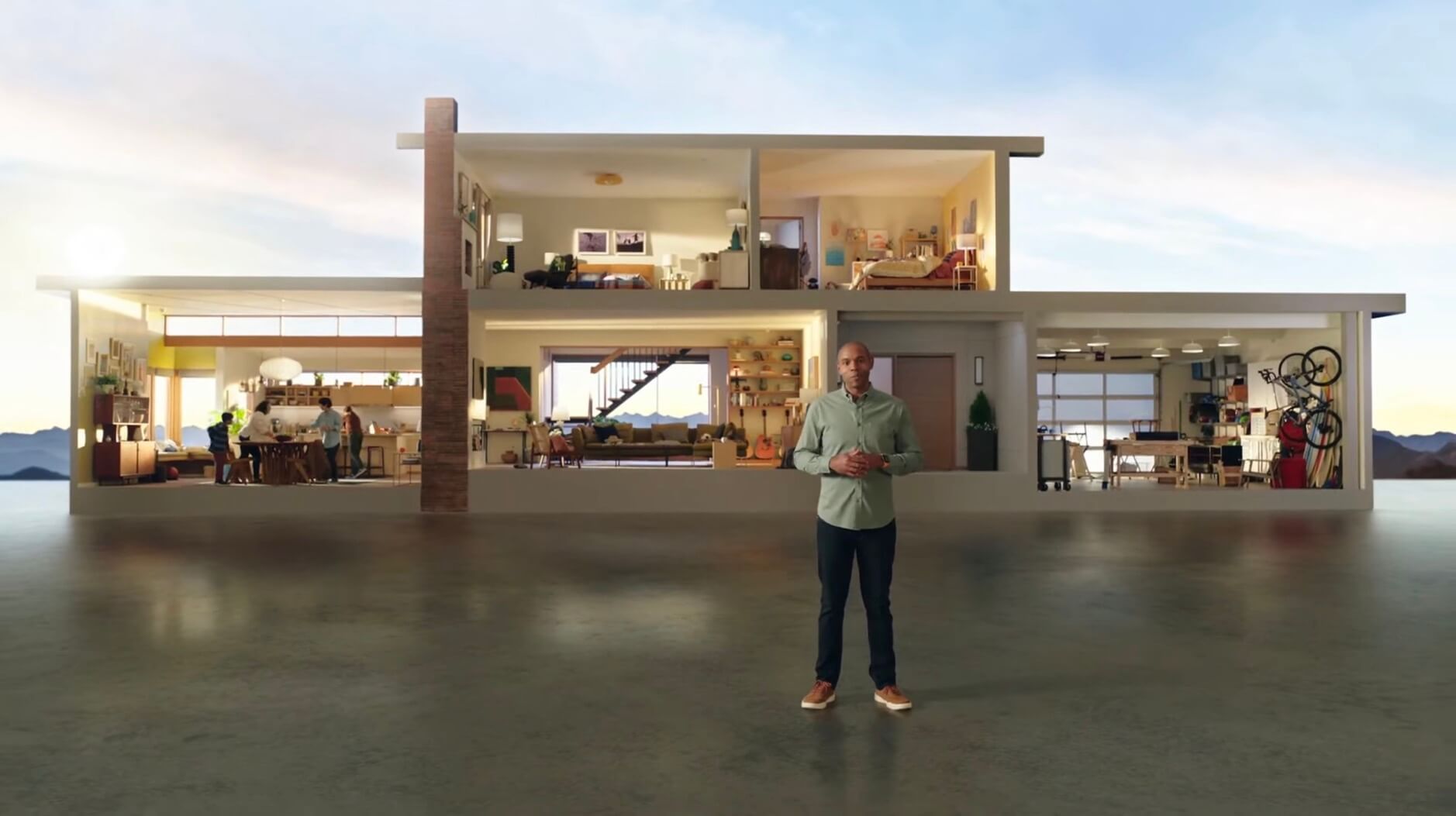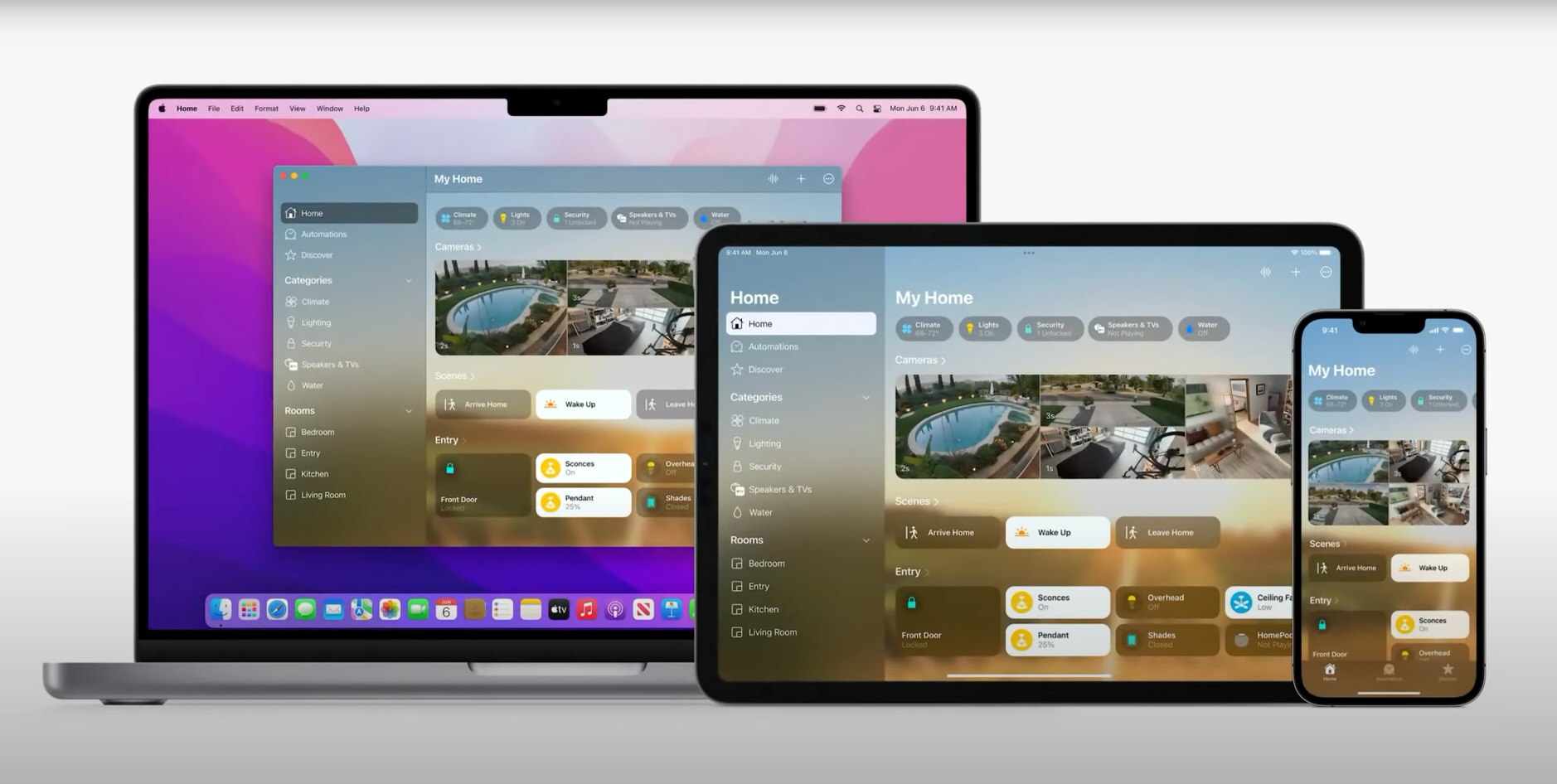„Works with Apple Home“
HomeKit heißt zukünftig Home – eine stringente und durchdachte Strategie fürs „smarte Zuhause“ zeigte Apple aber auch auf der diesjährigen WWDC nicht. Bislang existieren nur Ideen-Inseln.

Die Home-App in iOS 16 ist ein Fortschritt; tvOS fand auf der WWDC-Keynote dagegen keine einzige Erwähnung. Die HomePods sind abverkauft; der HomePod mini ist klasse, erfüllt aber andere Ansprüche. Netzwerk überlässt Apple weiterhin Drittanbietern.
Mit dem langen Anlauf für Matter verabschiedet sich das iPad als HomeKit Hub1 – HomePods und Apple TVs bleiben als Steuerzentralen (die für mich nicht ausreichend zuverlässig funktionieren).

Insbesondere die „Arbeitsgruppe zur Entwicklung eines offenen Standards“ – der gemeinsam mit Amazon, Google und der Zigbee Alliance zu Matter führte – ist kein schlechter Ausblick. Und trotzdem benutzen wir HomeKit jetzt schon seit 2014. „Es zieht sich“…irgendwie.
Unterdessen verabschiedet sich Facebook von seinem stationären Videochat-Telefon.
Meta is moving away from its goal to establish its Portal smart display as a consumer product, Protocol has been able to confirm. The company will not make any future versions of Portal geared toward consumers, and will instead focus on selling Portal to businesses.
The shift was first reported by The Information Thursday, which also said that the company was switching up its road map for AR glasses and postponing the launch of a consumer-ready AR product by a few years. All of this is part of efforts to control costs of Reality Labs, Meta’s unit focused on metaverse software and hardware.
Das erinnerte an ein Gerücht über eine „Lautsprecher-Set-Top-Box-FaceTime“-Maschine.
I absolutely do think a new HomePod is coming — specifically, a device that combines a HomePod, Apple TV and FaceTime camera. I don’t think a big stand-alone HomePod is still in development, but perhaps a new HomePod mini is coming. In any case, the combination product will probably be at the center of Apple’s approach, with HomePod minis surrounding that throughout the home.
via Mark Gurman
Ich glaube nicht, dass das weiterhilft.
Im Gegensatz zu Facebook hat Apple bereits Hardware mit Bildschirmen im Haus (und am Handgelenk) – in absehbarer Zeit kommt noch eine Brille dazu. Warum also noch ein Display? Warum ein fest installiertes (Status-)Display?
Ich habe keine Zweifel, dass das Apple hübsch bauen und (uns) verkaufen könnte. Die eigentliche Aufgabe ist jedoch das Zusammenspiel und die (clevere) Abstimmung unter allen bereits vorhandenen Computern – nicht unbedingt noch ein weiteres Gerät.
Hoffnung geben mir einzelne Bestrebungen, so wie „Siri Support on Third-Party Devices“ aus dem letzten Jahr und die diesjährige Fortführung mit der neuen Intents API.
AirPods, die noch zuverlässiger zwischen Geräten wechseln, wären ein Traum. Und Continuity Camera – die Möglichkeit, sein Videobild umzuziehen – klingt absolut vielversprechend. Hoffentlich lassen sich FaceTime-Gespräche am iPhone dann auch irgendwann auf den Apple TV werfen.
Das bleibt aber nur eine Hoffnung. Die „komplett überarbeitete Home App“ kommt zum Start nicht einmal für den Apple TV, obwohl die Set-Top-Box für Apple ein zentrales Element im Smarthome ist.
